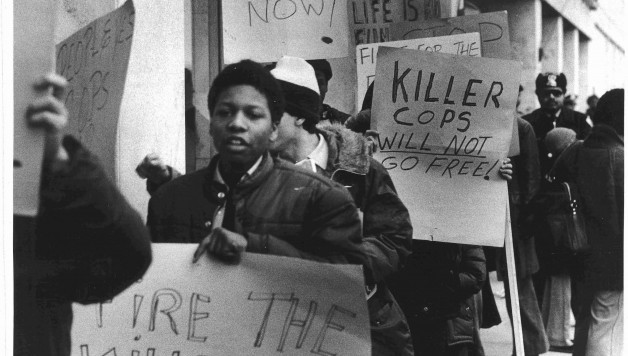On this day in 1964, a New York City cop shot and killed a fifteen year old boy, James Powell, leading to riots across Harlem in which residents protested, clashed with police, and caused approximately $1 million in property damage.
The rebellion began after Police Lieutenant Thomas Gilligan shot Powell three times in front of his friends and about a dozen other witnesses. Powell had entered the home of Patrick Lynch, a superintendent of three apartment houses in Yorkville, to confront him after he hosed down black students for allegedly hanging out on his building's stoops.
Gilligan, then off-duty, shot Powell while he was leaving Lynch's building. Although Gilligan claims Powell lunged at him with a knife, witnesses did not corroborate this account; some stated he raised his right hand in a defensive gesture before being killed.
Immediately after Powell's killing, a group of student protesters clashed with police securing the crime scene. The second day, the Congress of Racial Equality (CORE) joined the protests.
On July 18th, the protests became an outright rebellion after Powell's funeral, monitored closely by barricaded police. After the funeral ended and most of the press left, the crowd and cops began to fight. Residents took to the rooftops, throwing bricks, bottles, and mortar at the police below. When one officer shouted "Go home, go home!" at the crowd, a reply was heard: "We are home, Baby."
The unrest lasted until July 22nd, and included a mix of moderate factions from the NAACP as well as black nationalists. When prominent civil rights activist Bayard Rustin tried to discourage rioting, the crowd booed and chanted "Tom, Uncle Tom". When an NAACP representative addressed the crowd, stating Bedford-Stuyvesant was a "community of law" and discouraging rioting, his van was rocked until he lost control of his microphone.
At the end of the conflict, reports counted one dead rioter, 118 injured, and 465 arrested. In September, Gilligan was cleared of any wrongdoing by a grand jury and charges were dropped.
